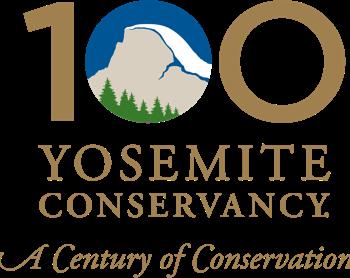
Centennial Campaign

Supporting Environmental Resilience:


Centennial Campaign

Supporting Environmental Resilience:
Since 192 3 , Yosemite Conservancy donors have supported vital work in Yosemite National Park to preserve natural resources and enhance visitor experiences for all. Your generosity has helped ensure the park is both a welcoming place for people to connect with nature and a refuge for biodiversity. As we embark on a second century of park partnership, we’re investing in research and restoration to ensure Yosemite’s wild plants and wildlife can thrive in a rapidly changing environmental reality.
Among the many living things that find a haven in Yosemite, giant sequoias are arguably the most inspiring. Spending time among the massive sequoias in the Mariposa, Merced, or Tuolumne groves is an extraordinary experience. These rare, endangered trees are found naturally only in the western Sierra Nevada. They’re renowned for their resistance to fire, disease, and insects, and can live for more than 2,000 years. But recently, extreme wildfires, drought, and beetle attacks have pushed their famed hardiness to a breaking point. An estimated 20 percent of the Sierra’s mature sequoias have died since 2015, an unthinkable statistic for a species once thought to be nearly immortal. Scientists fear that without a herculean effort, the ancient trees could vanish from the wild within a decade.
We are committed to ensuring sequoias in Yosemite and throughout the range persist for generations to come. As part of our Centennial Campaign, we are working with the Giant Sequoia Lands Coalition, a collaborative group of land management agencies, Tribes, nonprofit groups, and research institutions, to boost the resilience of the Sierra’s sequoias before they disappear.
Sequoias are physically astonishing. Over centuries, they grow from minuscule seeds into 200-foottall behemoths. They also nourish intricate webs of life. Many animals, including rare owls, bats, and fishers, rely on sequoia groves for food and shelter. Sequoias are etched into human history, too. For generations, Indigenous people tended groves in Yosemite and beyond. In 1864, Mariposa Grove’s sequoias inspired the first U.S. federal land protections, sowing the seeds for the National Park System. But in the 160 years since, the sequoias’ world has transformed dramatically. For millennia, sequoia groves flourished amid frequent natural and intentionally set mild fires that minimized undergrowth and plant litter. In the 19th and 20th centuries, however, land managers aggressively extinguished fires. Leaves, branches, and low-growing plants crowded forest floors. The groves became tinderboxes. Meanwhile, human-driven climate change has fueled extended droughts and increasingly hot, swift wildfires, and scientists have observed an alarming uptick in beetles attacking sequoias.
In the face of these complex and compounding dangers, researchers and resource managers in Yosemite and throughout the Sierra are racing to bolster sequoias’ long-term resilience. This multifaceted effort has two core components:
1. Research and monitoring to understand the threats and how they interact. Scientists are collecting samples from trunks, sap, soil, and streams to study how sequoias get water, assess how fire affects their water use, and identify trees that are particularly vulnerable to drought. They’re also climbing high into grove canopies to learn more about the genetics, life cycles, and habits of beetles that are infesting sequoia crowns.
2. Data - driven management to limit sequoia fatalities and repopulate the range. Use recent and ongoing research, as well as traditional ecological knowledge, resource managers are mitigating threats to the sequoias by reducing fire fuel and beetle habitat, including by carefully burning fallen branches and small shade-tolerant trees. They’re also gathering sequoia cones for reforestation; across the Sierra, the Coalition has already planted more than half a million sequoias in severely burned groves that are not regenerating naturally.
This work builds on past Conservancy donor-funded projects, including research on the conditions that help young sequoias thrive and the transformational restoration of Mariposa Grove. Through work in Yosemite, we know that research-based management can help protect sequoias. In 2022, when the fastmoving Washburn Fire threatened Mariposa Grove, no mature sequoias died, thanks to years of proactive fuel reduction. That survival story is a bright spot in a deadly era for sequoias.
Saving sequoias is at the heart of our vision for a resilient Yosemite. The mortality numbers are sobering, but we have the knowledge and tools to change the trajectory for these remarkable trees and the ecosystems they support. We also know that we cannot do this alone: Protecting sequoias requires landscape-scale collaboration. Research and management successes in Yosemite inform efforts to protect sequoias in other groves, and vice versa. In partnership with the National Park Service and the Giant Sequoia Lands Coalition, we’re honored to work with a passionate group of people, including rangers, Tribal members, donors, and scientists, to save a species with such immense ecological, cultural, and historical value and ensure the world’s remaining native sequoias survive for the next century and far beyond. We hope you will join us.